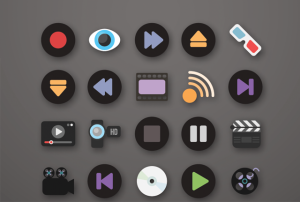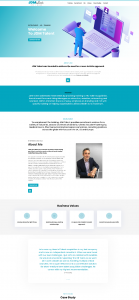Email newsletters are an invaluable tool for lead cultivation. Whether you’re trying to sell something or taking a softer approach, the medium of email is a broad canvas that allows for plenty of experimentation. Like any other facet of your sales and marketing flow, you should be A/B testing to see what works best. Here are seven ideas for A/B testing that you can incorporate without too much hassle.
Subject lines
There’s no better place to start in your quest for higher email ROI than the subject line. It’s the one part of your message that’s guaranteed to be read (unless you go straight to spam). The best email subject lines do a great job of hooking you from the beginning. Maybe they crack a joke. Maybe they make a factual claim about your industry.
You can play around with emojis or ask a question about something that you know your audience might find important. Just about everything in a subject line is fair material for testing, with maybe one exception: don’t use URGENT or !!! to trick someone into opening your email. The only thing that will do is leave a bitter taste in your recipient’s mouth.
Visual Media
Test out some form of imagery in your email sends. This can be as simple as including a photo, or maybe a clever GIF of the product you’re selling. For example, if you sell lighting, you could include a gif of one of your products turning on and off.
Play around with imagery of some form and see how it impacts your email performance. And don’t forget — it might be the case that the best imagery to use in your newsletters is no imagery at all.
Layout/Format
It may not seem like it, but syntax elements such as:
– line breaks
– spacing
– bullet points
– and paragraphs
Influence the way we consume information (see what I did there?).
Test out what seems to perform better. It’s especially useful to think about the purpose of the email you’re sending and what sort of formatting may be the best fit. A technical yet informative email might convey that information best with a series of short, digestible chunks of data in bullet points. If you’re selling a handicraft that was lovingly designed and sustainably made, you might have more of a story to tell and therefore choose paragraphs to suit your prose.
If you’re trying to make a particularly dramatic point with your email copy, you don’t need to write a lengthy poem or prose-heavy copy. Simply indenting and creating short line breaks is enough to create a powerful effect.
Additionally, you should consider A/B testing any design elements that are part of your email layouts. Border frames, vector icons, or graphic templates are three examples to consider.
CTA
As the old saying goes, how you sell is as important as what you sell. A CTA embodies this idea to the letter. Are you asking someone to buy now, or sign up for blog updates down the road? Tweaking the copy you place in your CTA, not to mention basic design variables such as color, size, and shape could have a positive (or negative) effect on performance. Besides the basic “Buy Now/Submit/Sign Up” buttons, it’s worth trying out something more value proposition-oriented. “I want to increase my ROI by 45%” or “Explore our awesome new Fall lineup” are both perfectly good examples of CTAs that do a solid job of enticing the reader to click based on the promise of something that they probably care about.
Length
Emails are generally short and sweet, but just how short are you going? Three paragraphs? One? Try testing the same message at different lengths, ranging from blunt and to the point to a longer, more creative narrative, and see what performs better.
Tone
How do you talk to your readers? Are you a trusted friend that keeps them in the loop with the best deals, or an insider with the most up-to-date knowledge they can get their hands on? The way you want your readers to see you probably affects the tone of your emails.
Try changing it up and playing around with tone. If you’re usually more of a hard seller, try a soft sell. If you’re usually more serious and formal, try being a little more informal and see what happens. You never know what your audience might respond to.
Timing
This is an easy one to change with almost no work involved. You may think you’ve found the sweet spot for optimizing your open rates, but you can always experiment to see what happens. Try looking day by day and see which days are struggling – maybe weekends are trailing behind, for example. Test some different times for each day and see if you can’t boost that open rate, or better yet, conversion rate!
Links
It’s pretty common to have a main link that you’re hoping your reader will click, whether it’s to read your latest blog or check out your new product. But have you tried a longer form email with multiple links? Try A/B testing one link versus a few and see which gets a higher click rate.
Conclusion
Getting the emails of your potential customers and readers is one thing, but converting them into sales is a whole other challenge. Experimenting and A/B testing different components of your emails is the only way you’re going to figure out what works for your business, so don’t be afraid to get creative and change things up.
Digital & Social Articles on Business 2 Community
(21)






